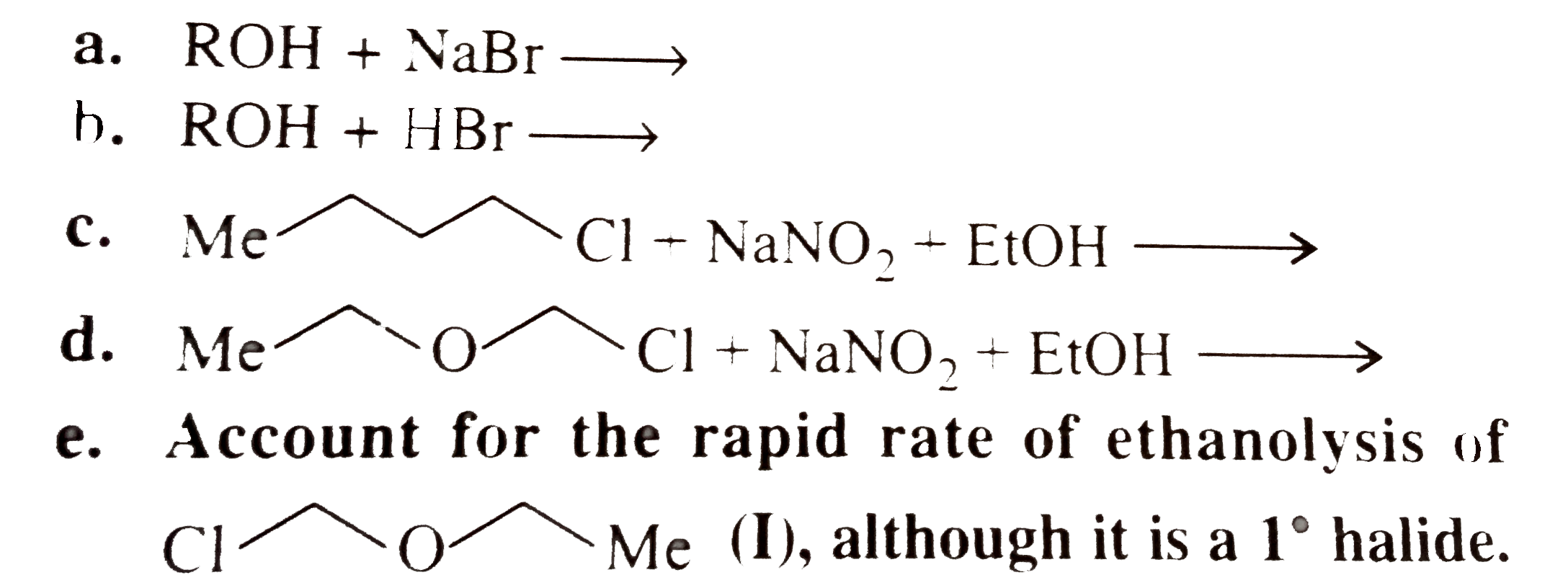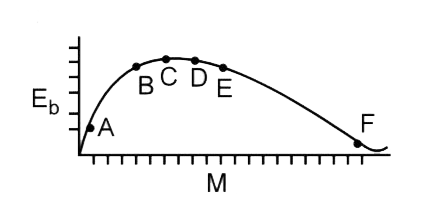On the basis of given reactions,the correct order of increasing oxidising of A,B,C & D is. , (b) , (c) , (d)
To determine the correct order of increasing oxidizing ability of A, B, C, and D based on the given reactions, we will analyze each reaction step by step.
Step 1: Analyze Reaction (a)
Reaction: A−+B→A+B−
In this reaction, the A− ion is oxidized to A (oxidation state changes from -1 to 0), while B is reduced to B− (oxidation state changes from 0 to -1). This indicates that A is a reducing agent and B is an oxidizing agent.
Conclusion: The oxidizing ability of A is greater than that of B.
Order so far: A>B
Step 2: Analyze Reaction (b)
Reaction: C+D−→no reaction
Since there is no reaction, it implies that C cannot oxidize D−. Therefore, the oxidizing ability of C is greater than that of D−.
Conclusion: The oxidizing ability of C is greater than that of D.
Order so far: C>D
Step 3: Analyze Reaction (c)
Reaction: C−+B→no reaction
Again, since there is no reaction, it implies that C− cannot oxidize B. Therefore, the oxidizing ability of B is greater than that of C−.
Conclusion: The oxidizing ability of B is greater than that of C.
Order so far: B>C
Step 4: Analyze Reaction (d)
Reaction: D+A−→D−+A
In this reaction, A− is oxidized to A (oxidation state changes from -1 to 0), and D is reduced to D− (oxidation state changes from 0 to -1). This indicates that D is an oxidizing agent and A is a reducing agent.
Conclusion: The oxidizing ability of A is greater than that of D.
Order so far: A>D
Final Order of Increasing Oxidizing Ability
From the conclusions drawn:
1. A>B
2. B>C
3. C>D
Thus, the final order of increasing oxidizing ability is:
D<C<B<A
Reaction: A−+B→A+B−
Order so far: A>B
Reaction: C+D−→no reaction
Order so far: C>D
Reaction: C−+B→no reaction
Order so far: B>C
Reaction: D+A−→D−+A
Order so far: A>D
From the conclusions drawn:
1. A>B
2. B>C
3. C>D
D<C<B<A
Similar Questions
Explain the reaction :
(a) ROH+NaBr→
(b) ROH+HBr→
(c)
View Solution(a) Use the following reactions to arrange the elements A ,B, C and D in order of their redox reactivity :
(i) A+B+→A++B
(ii) B+D+→B+D
(iii) C++D→ No reaction
(iv) B+C+→B+C
(b) On the basis of above redox activity series predict which of the following reactions would you expect to occur.
(i) A+C→A+C+ (ii) A++D→A+D+
View Solution
Knowledge Check
For the reaction, 2A+B→C+D, the order of reaction is
AOne with respect to [B]BTwo with respect to [A]CThreeDCan't be predictedFor the reaction, 2A+B→C+D, the order of reaction is
AOne with respect [B]BTwo with respect to [A]CThreeDCannot be predictedIn the reaction, 3A → 2B rate of reaction, +d[B]dt is equal to
A−13d[A]dtB−23d[A]dtC+2d[A]dtD−32d[A]dt
In the following reactions, identify the compounds A,B,C and D.
(i) PCl5+SO2→A+B
(ii) A+MeCOOH→C+SO2+HCl
(iii) 2C+Me2Cd→2D+CdCl2.
View SolutionFor the reaction : A+2B→C+D, the expression of rate of reaction will be :
View SolutionGiven the following reaction involving A,B,C and D
(i) C+B+→C++B
(ii) A−+D→ NO reaction
(iii) C++A→ NO reaction
(iv) D+B+→D++B
the correct arrangement of A,B,C,D in the order of their decreasing ability as reducing agent
View SolutionIf 3A→2B, then the rate of reaction of +dBdt is equal to
View SolutionThe above is a plot of binding energy per nucleon Eb, against the nuclear mass M, A, B, C, D, E, F correspond to different nuclei. Consider four reactions

(i) A+B→C+ɛ (ii) C→A+B+ɛ
(iii)D+E→F+ɛ and (iv) F→D+E+ɛ
Where ɛ is the energy released ? In which reactions is positive.
View Solution